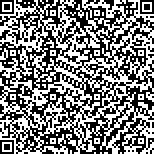下载中心
优秀审稿专家
优秀论文
相关链接
首页 > , Vol. , Issue () : -
摘要

植被物候是陆地生态系统响应全球气候变化的最灵敏生物学指示指标,也是影响陆地生态系统碳循环的重要因子。因此,植被物候的准确监测对模拟陆地生态系统碳循环以及理解陆地生态系统响应气候变化至关重要。物候学发展至今,已有包括人工观测、物候相机观测和通量监测在内的地面观测以及遥感监测等多种植被物候监测手段,并已形成卫星遥感监测为主要手段、地面观测为验证的区域和全球尺度植被物候监测体系。植被物候遥感监测通用技术流程中的每个处理环节都会造成物候监测的不确定性。本文重点梳理了遥感时序数据、物候指标提取和遥感物候真实性检验三个物候监测关键环节,深入探讨了地表背景对遥感指数的干扰、不同物候指标提取方法的差异以及物候验证中遥感物候指标与参考物候指标之间的匹配问题。最后,探讨了解决这些关键问题的两个重要发展方向:(1)发展抗地表背景干扰的植被物候遥感监测方法,(2)构建结合地面多传感器协同观测和“天-空-地”多尺度一体化观测的联合观测网络。
Vegetation phenology is the most sensitive biological indicator of terrestrial ecosystem responses to global climate change and plays a crucial role in the terrestrial carbon cycle. Therefore, accurate monitoring of vegetation phenology is essential for simulating the terrestrial carbon cycle and understanding how terrestrial ecosystems respond to climate change. To date, various monitoring methods for vegetation phenology have been developed, including ground-based observations (such as manual observation, phenocam observation, and carbon flux based monitoring), modeling simulations, and remote sensing monitoring. A regional- and global-scale vegetation phenology monitoring system has been established, with satellite remote sensing as the primary method and ground observations for validation. Each processing step in the general technical workflow of remote sensing-based vegetation phenology monitoring introduces uncertainty into the monitored phenometrics. This paper focuses on three key aspects of phenology monitoring: remote sensing time-series data, phenometrics extraction, and phenometrics validation. Meanwhile, we deeply discuss the impact of background on remote sensing time-series data, the differences between various phenometrics extraction methods, and the matching issue between remote sensing phenometrics and reference phenometrics during validation. Finally, two essential directions to address these key issues are proposed: (1) developing remote sensing monitoring method of vegetation phenology against background interference, and (2) establishing a comprehensive observation network that integrates ground-based multi-sensor coordinated observation and "space-air-ground" multi-scale integrated observation.

